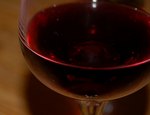
“Dynamic consumer preferences and market trends require wine producers to be constantly innovative in terms of sensory and quality parameters,” Miguel Angel Pedroza and colleagues wrote.
“However, many wine cellars deal with limited budgets, where little is left for approaching constantly changing consumer demands,” they added, writing in the journal Food Chemistry.
Sensory and flavor perceptions related to composition and concentration of flavonoids, phenolic acids and volatile compounds extracted from grapes during processing, the scientists explained.
Specific harvesting and oenological techniques, reactions during winemaking and ageing also had a significant effect upon the overall wine profile, Pedroza et al. added.
‘Doomed’ to additive use
They explained that optimal sensory attributes (with color key) lasted for a shorter time in standard wine than premium wines (Zamora 2003), with declines due to low polyphenol concentration, oxidative degeneration and polymerization-condensation.
The team said that changes were “particularly important for red wines because color is an important quality parameter that may influence consumer preferences”, while the volatile profile of wines was considered a key quality attribute.
Declines in overall attributes related partly to low concentration of polyphenols in grapes used to make most standard or low quality wines, the team noted, adding that such products were “doomed to use” either SO2 or ascorbic acid (a form of Vitamin C) to reduce oxidative reactions.
Other additives – wood chips, enzymes, tannin, E163 – were now commonly used by winemakers to improve the sensory profile of wines to make them more competitive and reduce defects, they added.
Pedroza et al. noted that juice industry grape marc was another option, since waste skins from this industry were generally obtained after shorter maceration times (four days) versus those used in red wine making, implying that they were less exhausted and a richer source of several compounds.
Thus, the team's research involved adding four different mixtures of dehydrated red and white grape skins (drawn from fruit juice concentrate waste) to two aged and two young red wines before bottling.
Useful tool to boost color
The wines were all produced by an unnamed Spanish winery using Tempranillo, Cabernet Sauvignon and Merlot grapes, with the younger vintage similar to table wines commercialized as a bulk product with a three-year post-bottling shelf life.
After the skins were added, the team reported that wine color intensity increased 11% on average (31% maximum) while total polyphenol counts rose 10% in mean terms (20% maximum).
“The use of dehydrated waste grape skins from the juice industry proved to be a useful tool for ameliorating quality parameters of color and phenolic compounds before bottling,” they concluded.
Complementary mixing of red and white grape skins also released significant amounts of anthocyanins and phenolic compounds, characteristic of each grape skin variety, the team found.
Bioactive compounds such as resveratrol and (flavanoids) catechins were significantly released in all types of dehydrated waste grape skins, Pedroza et al. added.
“Although the use of dehydrated wine grape skins is currently not authorized as enological practice because of its novelty, probably, the most important challenges for its approval as a wine additive will come from political and cultural concerns related with the usage conditions,” they wrote.







